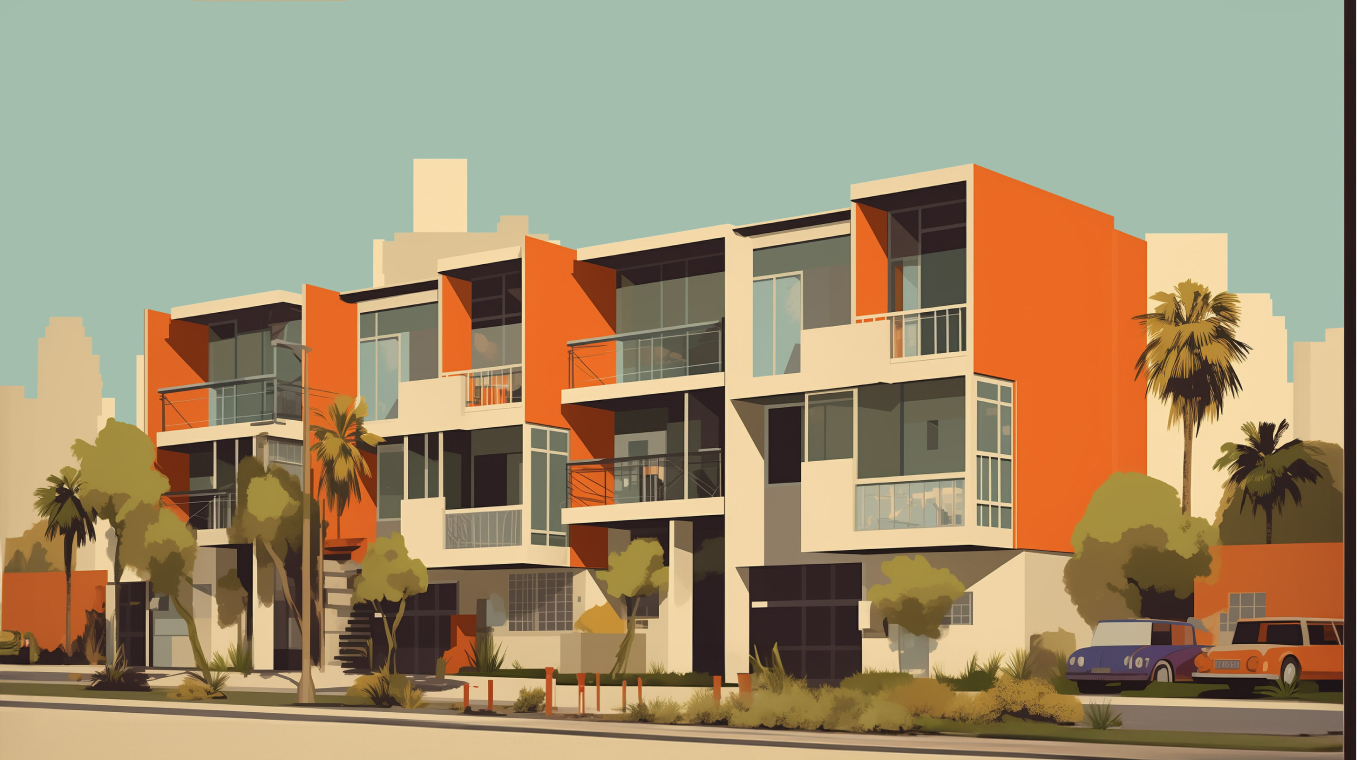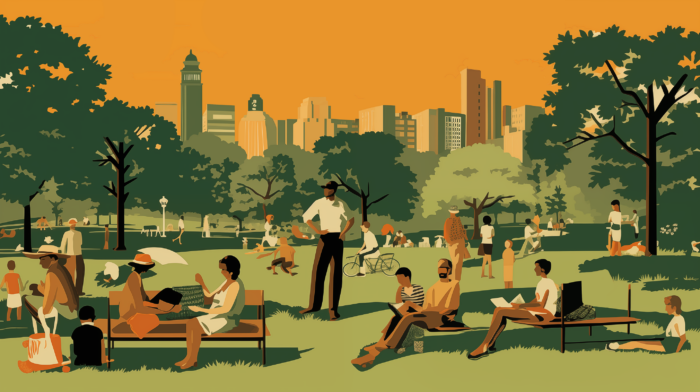If you have questions or want to learn more, please fill in the form or send us an email at:

How Los Angeles is Unlocking More Middle-Income Housing
In most supply-constrained high-cost metropolitan areas across the US, we’re used to seeing only two kinds of multifamily housing projects get built.
One is a large building with ample amenities like rooftop pools, gyms, and dog spas. While not exactly as “luxurious” as marketed, these projects are designed and built to compete for tenants at the top of the rental market.
The other type of project is deed-restricted, 100% affordable housing funded largely by state and federal tax credits. Thanks to the state’s complicated financing system and environmental and labor standards, these projects now regularly cost north of $1 million a unit to build in California.
What if we could build a third type of multifamily housing? By that, I mean new, privately-funded, no-frills buildings designed to cater to the middle of the market.
Building this kind of “workforce housing” is in many ways a forgotten art. But in high-cost cities where a large share of residents don’t qualify as “low-income” yet still struggle to afford market-rate rents, it’s vitally important that we create more units like this. As it turns out, the City of Los Angeles may have stumbled upon a mix of directives and policies that have incentivized developers to do just that—one that other metros with rent-burdened middle-income households could do well to emulate.
LA’s Pro-Housing Pivot
Under LA’s Executive Directive No. 1, all proposed housing projects where 100 percent of the units are deed-restricted and leased at rents affordable to residents making no more than 80 percent of the city’s Area Median Income (AMI) were fast-tracked: instead of subjecting these projects to a long and uncertain approval process, the city’s Planning Department was given just 60 days to approve them.
Soon after LA’s incoming Mayor Karen Bass signed ED 1 in December 2022, applications began pouring in. In fact, in the year and change since, more than 16,000 units of affordable housing have been proposed—more than the city approved in the prior three years.
Even more surprising: nearly three-quarters of the projects were proposed by private developers who planned to build them without public subsidy.
Why? The short answer is ED 1 made these affordable projects suddenly look profitable.
The simple act of granting a time-certain, administrative approval process in a city famous for its lengthy and uncertain entitlement process was revolutionary. Without the need to win approval at city council, engage in endless community outreach, and commission onerous environmental impact studies, developers could obtain approval in a matter of weeks instead of the city’s pre-ED 1 average of 243 days.
Lengthy, discretionary local approval processes are a primary driver of ballooning “soft costs” in projects across the country. But even more important than the time saved was the certainty provided by the new process. As long as an ED 1 project met a basic set of criteria, it was guaranteed to be approved.
The second key factor that kickstarted LA’s affordable housing bonanza was California’s State Density Bonus Law, which allows for 100 percent affordable projects to request unlimited incentives, waivers, and concessions on specific zoning and building code issues that increase building cost or make the proposed project physically impossible.
Like those of other big cities, LA’s zoning and building codes are incredibly complex, with layers upon layers of arcane rules dating back as far as the 1930s. When you add up everything from the most basic limitations (height, square footage, open space, setbacks) to the more minute (street trees, roof decks, facade articulation, etc.), you get a morass of rules that dramatically increase the cost to build. But Density Bonus Law exempts ED 1 projects from most of these requirements.
Taken in combination, the mayor’s guarantee of speedy and certain approval and the state’s policy of granting unlimited waivers and concessions to affordable projects offered up cost savings that potentially outweighed the lost revenues from rent caps. In a housing market with few attractive investment options, applications from developers came pouring in.
Unanswered Questions
So far, only a few ED 1 projects have broken ground. And the city—after declaring the need for affordable housing a top priority—has made several surprising moves to make the program harder to utilize going forward.
As for those projects that have already received approval, it remains an open question whether the majority will ultimately be completed and operated at a profit. The answer to two questions will decide whether they are: First, will renters want to live in these small, bare-bones units—especially given the byzantine income verification process tenants need to clear in order to qualify for income restricted units? Second, will developers be able to keep construction costs low enough to turn a healthy profit?
Because newly constructed, no frills, one-bedroom apartments that don’t come with parking are rare in most American cities, it’s virtually impossible to answer these questions definitively. But there’s plenty of reason to think ED 1 projects will be successful—depending on where they’re located.
A substantial majority of ED 1 projects have been proposed in historically under-served and under-resourced neighborhoods across the city such as South LA, where land costs are cheap enough to guarantee relatively contained costs. Savvy developers and investors nonetheless see these projects as a bad bet because they will be competing against existing housing stock that is roomier, includes parking, and commands roughly comparable rents.
On the other hand, in West LA (and Santa Monica, where I serve on the City Council), where the demand to live is sky high and rents are crushingly unaffordable, these projects seem like a much better proposition—provided developers don’t overspend on site acquisition and manage to keep their construction costs contained.
Building ED 1 projects in places like West LA is also a better idea from an equity perspective, as these are the temperate, job- and transit-rich areas of the city where we most need more affordable housing.
The inherent risks associated with ED 1 projects have reportedly led a number of larger, institutional developers and investors to remain on the sidelines—while many of those who are plowing ahead either lack experience or run smaller, scrappier outfits.
“Inexperienced” is never a great quality in a builder, but “lean and scrappy” will be an essential quality for any contractor trying to hit the $200-250K per-unit price tag necessary to make these projects pencil in high-resource neighborhoods. Indeed, if ED 1 successfully lures smaller, “mom and pop” homebuilders and house-flippers into the affordable multifamily space and they succeed in building workforce housing at a contained cost, it would truly be a game changer.
Either way, LA’s flood of proposals for affordable housing offers a tantalizing glimpse into what a healthy housing market unburdened by labyrinthine approval processes and overly prescriptive zoning codes might look like; a market where private capital could be easily marshaled to build not just for the top of the income distribution but also for the middle.
LA’s experience shows that guarantees of greater speed and certainty are invaluable to homebuilders, and policies that set “shot clocks” for city planning departments to approve projects can move the needle significantly. When you combine those reforms with relief from other zoning and design rules that drive up the cost of construction, you make it possible to bring far more moderate income units to the market. Policymakers from other high-cost, supply-constrained cities should take note.
Jesse Zwick is a writer, public policy and communications consultant, and Santa Monica City Councilmember.



